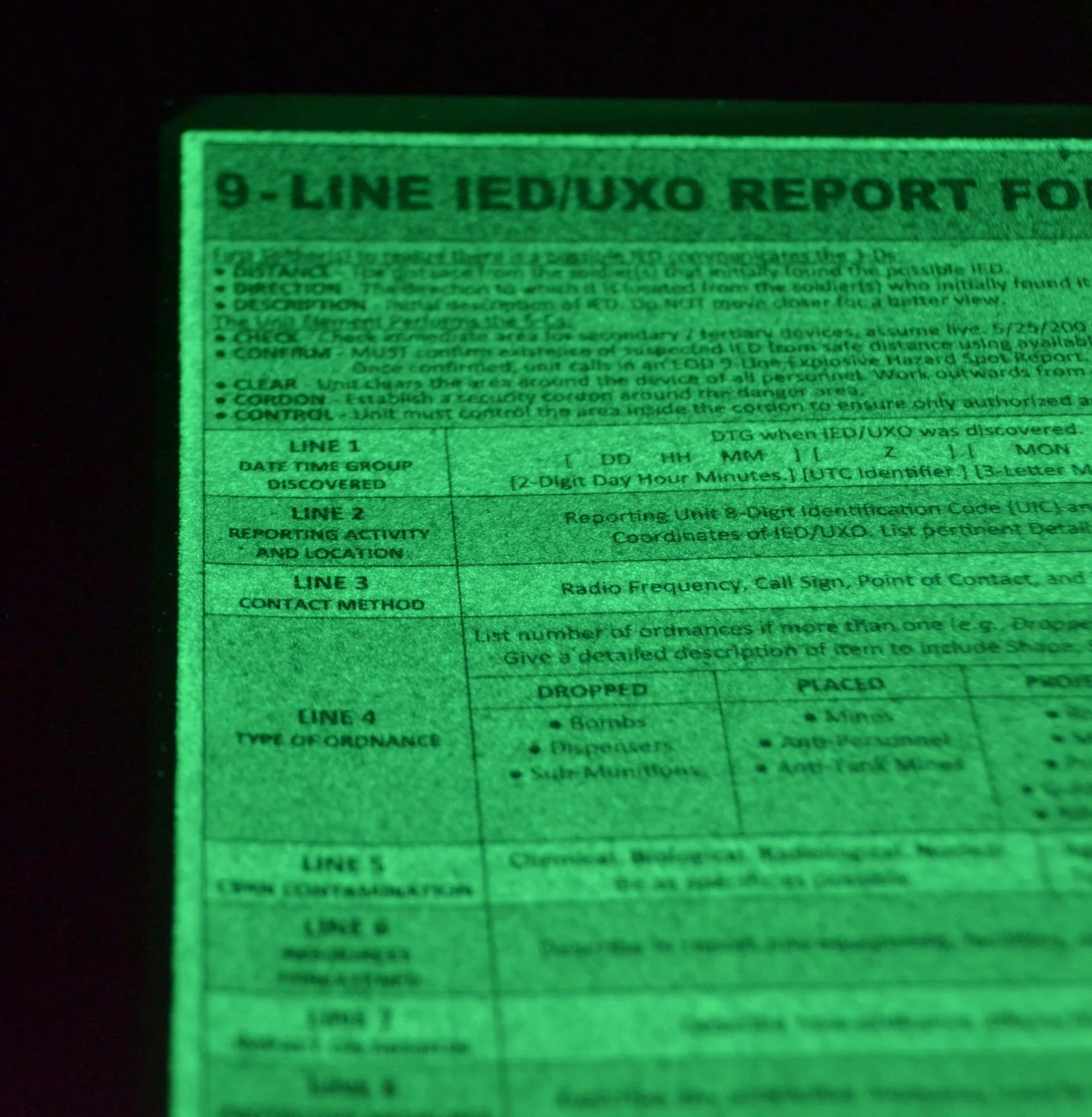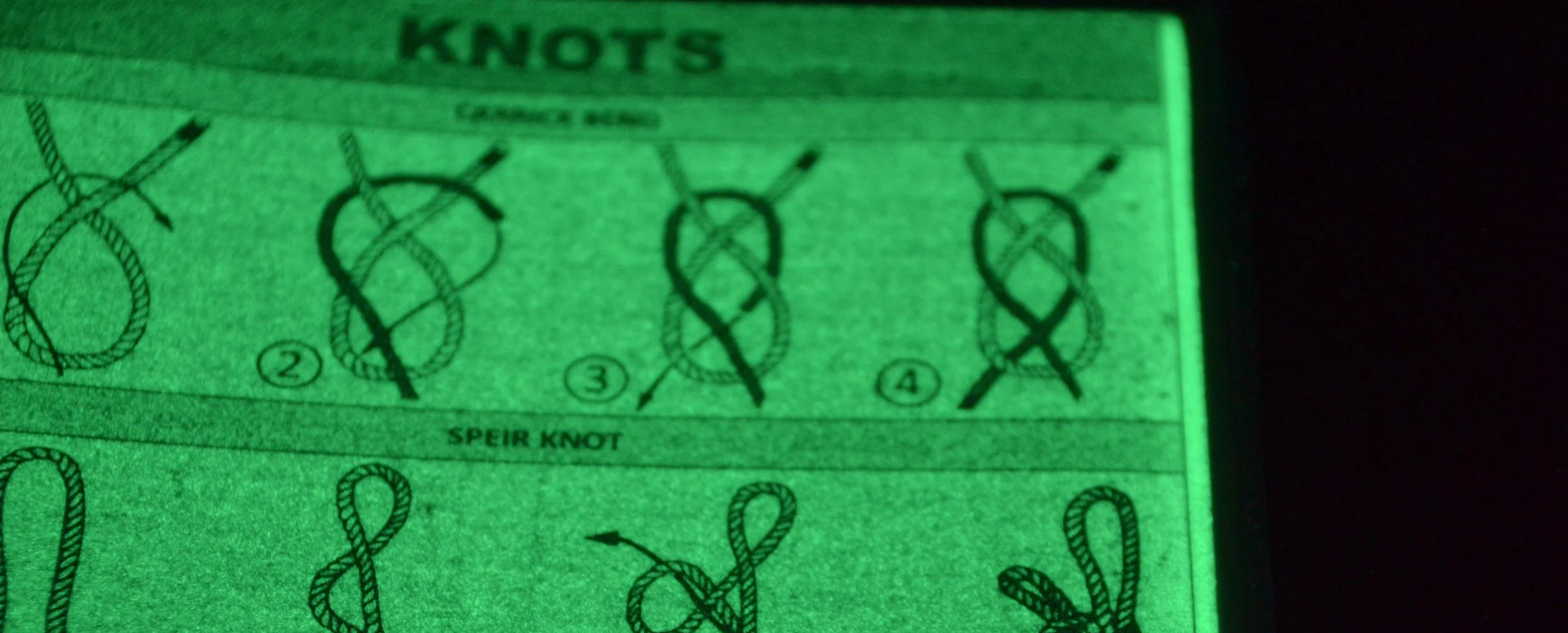THE KNIGHT SIGHT DIFFERENCE
THE KNIGHT SIGHT DIFFERENCE
When darkness turns to confusion,
KNIGHT SIGHT arms you with field-tested references that restore clarity.
-
A concise breakdown of each element of METT-TC, followed by a practical example of a full METT-TC analysis.
Know the ground. Know the fight.
METT-TC makes every move deliberate. -
Covers both a detailed and streamlined version of the five-paragraph OPORD. Includes expanded explanations for planning and training, as well as a quick-reference format for field use.
Order delivered. Mission understood.
-
Outlines the structure and purpose of a Warning Order, designed to give units early notice and prep time before a full OPORD. Includes format and example.
The first signal to move with clarity before contact. -
Details the format of a Fragmentary Order, used to modify or update an existing OPORD. Quick, precise, and mission-focused.
Stay aligned, adapt fast. FRAGORD keeps you on target. -
A comprehensive chart detailing the annexes commonly used with Operation Orders, organized for quick reference.
-
Covers the structure of the Game Plan and the Close Air Support 9-Line, the standard method of requesting and controlling CAS. Clear format and sample request included.
Precision communication for decisive firepower. -
Provides the 5-Line format tailored for rotary-wing Close Air Support missions. Streamlined for speed while retaining critical information.
Fast, flexible, and built for the gunships overhead. -
Details Call-for-Fire procedures specific to Anti-Aircraft Artillery and Special Operations Forces gunship platforms. Focused on accuracy, brevity, and timing.
Coordinated fire that dominates the battlespace. -
Defines the terms and methods used to spot and adjust fire using range and deviation corrections. Essential for precision in artillery adjustment.
See, adjust, strike. Accuracy begins with spotting. -
Breaks down the six essential elements of a Call for Fire and the format for submitting a request. Structured guidance with examples.
The language of firepower, mastered in six parts.
-
Explains the structure and meaning of CBRN report types and their individual line items. Provides clarity on standardized reporting for chemical, biological, radiological, and nuclear events.
Know the lines, report with precision under pressure. -
Covers the CBRN-1 format, the first and most critical report from an observer following an incident. Speed and accuracy emphasized.
-
Details the complete sequence of CBRN 1-6 reports with reference to each line item. Provides a framework for escalating detail and situational awareness.
-
Outlines the use and flexibility of variable-format CBRN reports. Designed for rapid adaptation to incomplete or evolving data in the field.
Adaptable reporting. -
Presents the 9-Line report for Improvised Explosive Devices and Unexploded Ordnance, including the hazard spot format. Critical for EOD support and safety.
Every detail saves lives. Report hazards right. -
Breaks down the 9-Line MEDEVAC request, the standard method for medical evacuation. Includes guidance for clarity under stress.
When seconds matter, nine lines bring them home.
-
Explains the standard identities and frame shapes used to represent friendly, hostile, neutral, and unknown forces across domains. Provides the foundation of map symbology.
-
Covers the core symbols for identifying units and organizations. Includes echelon indicators and standard modifiers for operational clarity.
Every symbol tells the story of a unit in the fight. -
Details the graphical icons used to depict task organization. Essential for showing attachments, detachments, and operational relationships.
Icons that turn structure into strategy. -
Breaks down the primary icons representing combat, combat support, and combat service support units.
Where mission meets symbol. -
Outlines symbols used for tactical mission tasks such as seize, secure, destroy, and delay. Designed to communicate intent quickly on the battlefield.
-
Covers sustainment symbols for logistics, supply, and distribution operations. Ensures operational clarity in the movement of resources.
-
Catalogs the icons representing U.S. and allied weapon systems. Provides instant recognition of capabilities on operational graphics.
Weapons on paper are capabilities at a glance.
-
Visual tool for displaying tactical orders on a map or overlay. Shows unit dispositions, boundaries, objectives, and control measures in a clear, standardized format.
Orders made visible, missions made clear. -
Template used to record weapon sector data, engagement lines, and target reference points. Provides a quick reference for defensive fires.
Your sector, defined and ready. -
Specialized range card tailored for indirect fire. Captures gun data, deflection, and range information for accurate artillery support.
Artillery accuracy begins with the card. -
Precision tool for snipers to record distances, reference points, and target data within their field of fire. Essential for accuracy under changing conditions.
One shot, one card, one confirmed hit.
-
A structured checklist ensuring both soldiers and leaders confirm mission readiness through gear, equipment, and situational checks before stepping off.
Ready is a decision, not a guess. -
A rapid reporting format designed to communicate critical battlefield information in the shortest possible time.
Quick words save lives. -
The standard method for reporting enemy activity: Size, Activity, Location, Unit, Time, and Equipment.
Six details make the difference. -
A step-by-step framework guiding leaders through planning, preparation, and execution in all missions.
Plan, prepare, prevail. -
A foundational guide covering Airway, Breathing, and Circulation for immediate life-saving care in the field.
First steps for saving lives. -
A reference tool for quick conversion of units across distance, speed, volume, and weight under operational conditions.
Precision starts with the right numbers. -
Essential formulas and tools for converting grid, azimuth, and scale when navigating terrain or relaying coordinates.
The difference between lost and locked-on.
THANK YOU FOR YOUR INTEREST
THANK YOU FOR YOUR INTEREST








